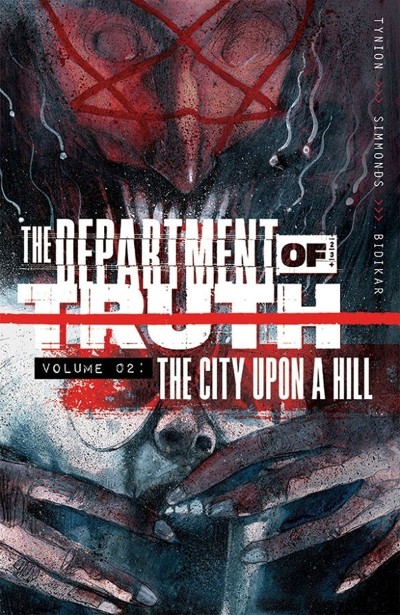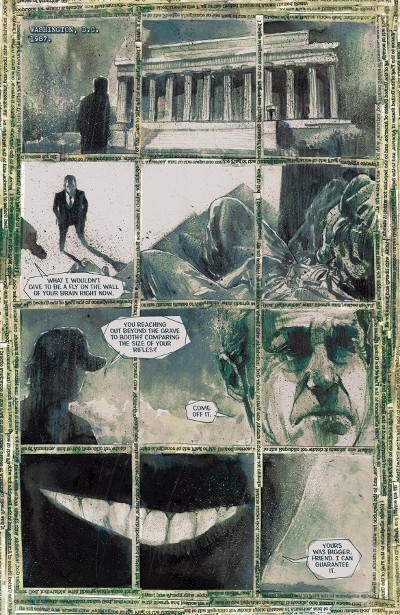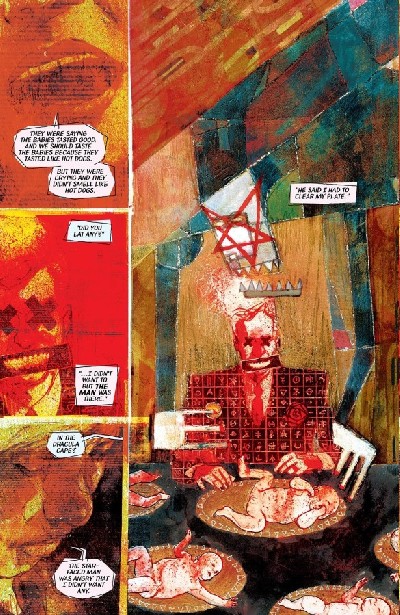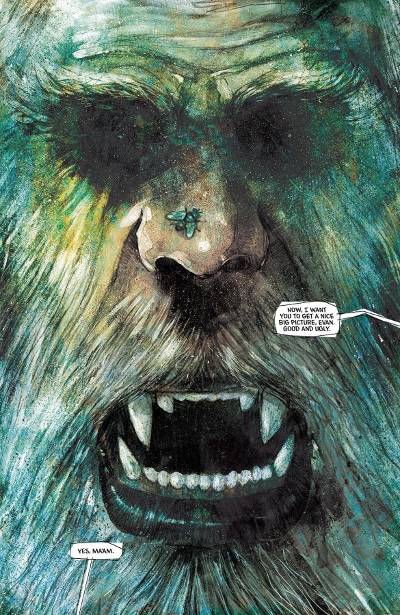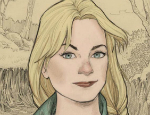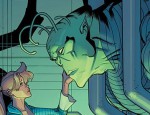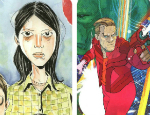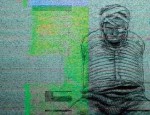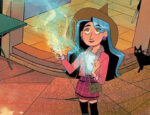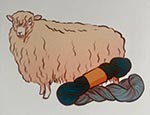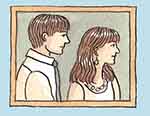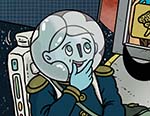The first volume of The Department of Truth established the hot new Image series’ mind-bending premise; that enough people believing in one form of reality would manifest it. Conspiracy theories became a self-fulfilling prophecy. The Department of Truth’s second volume continues through these proposals – expanding into different strands of conspiracy theory – but takes a more plot-heavy approach than the previous volume’s anthological structure. The Department’s newest recruit, Cole Turner, continues his initiation that peels back layers of the already shadowy agency, questioning whether the rival Black Hat organisation is really any worse than his own.
Accompanying Cole on his disorienting journey through the American psyche is Hawk Harrison, a jingoistic and unflinching higher-up of the Department who helps to reassert and “correct” narratives of “the real world” around Black Hat’s conspiracy interference, including planting a suitcase bomb inside Denver International Airport to show how normal it is inside.
Denver Airport is a hub of conspiracy theories, some arguing it’s the headquarters of the New World Order, with its new-aged murals and fences shaped like Swastikas. All of it is nonsense, of course, and often contradictory, but Hawk uses it to demonstrate to Cole how humanity always strives for connections and hidden agendas. As Hawk explains to Cole, “when you make the connection, you give something meaning, and when millions of people make a connection over time, that connection deepens.” Or, as he more crudely puts it, “the pamphlet in your vampire tarot didn’t decide that the wand is a phallus. The fact that a wand looks like a big fucking cock did that.”
James Tynion IV’s explanation (via Hawk) of symbology, memetic knowledge and the power of association are fascinating, but admittedly sometimes long-winded. Entire issues are dedicated to lectures around shaping our collective meaning, losing The Department of Truth’s mounting horror through primarily theoretical speeches. It can make these issues feel more like mouth-pieces than interwoven stories. The Department of Truth works best when linking such conspiracy theories to the “victims” – like the stellar “crisis actor” issue from volume 1 – which volume 2 achieves with a Bigfoot hunter.
As Cole and Hawk travel to the forest to eliminate a manifested cryptid, Tynion parallels this with a man whose father became obsessed with the search for Bigfoot. Now the man has inherited this same obsession, determined to prove his (and his father’s) life was not in vain. The Department of Truth – with the help of Aditya Bidikar’s tenderly authentic lettered message to the man’s son – renders a heart-breaking tale of a frankly embarrassing obsession, and how this search for a “special” hidden truth has consumed several generations. It’s in these moments of strange sympathy for conspiracy theorists, understanding the damage and quiet desperation within these ostracised beliefs – that The Department of Truth truly shines.
Plus, Martin Simmonds’ artwork is consistently impressive, allowing the creeping and disturbing implications of the story to seep onto the page. Simmons always renders the manifested thought-form “tulpas” in this scratchy, phantasmagorical style that makes them seem otherworldly. Simmonds also employs a collage style, showing Cole’s childhood “Satanic Panic” manipulations in queasy ‘Saturday Morning Cartoon’ style or mixing panel borders with excerpts from the Pledge of Allegiance, enforcing the kinds of conditioning and twisted belief (including patriotism) explored inside this volume. Even Tynion’s more long-winded explanations are often neatly broken up by impressive double-page spreads and compositions that mostly let the words dance along the page.
This second volume perhaps removes the sheen of hype from The Department of Truth, but it remains an impressive series that insightfully examines aspects of people’s beliefs, especially when it remembers to add the human element. This edition does omit the “fill-in issues” of #6 and #7, which may irk hardcore completists, instead sticking to the plot-heavy narrative that upsets the already murky boundaries between truth and reality. Last volume established a clear moral line that the world is one way, and the Department righteously keeps it there. But this volume peers into the uncomfortable power of one government agency getting to decide which America, of the many that exist, is the right one.
James Tynion IV (W), Martin Simmonds (A), Aditya Bidikar (L), Dylan Todd (D) • Image Comics, $16.99
Review by Bruno Savill de Jong





